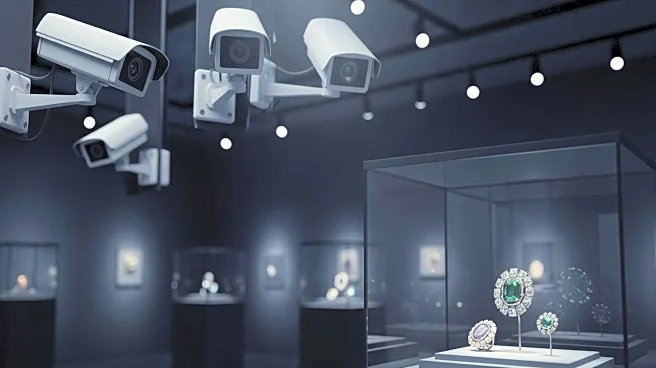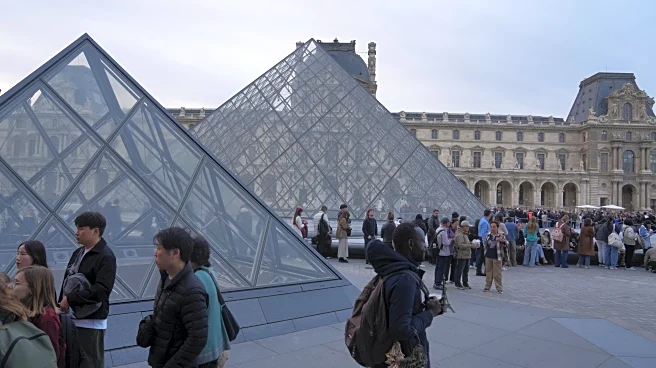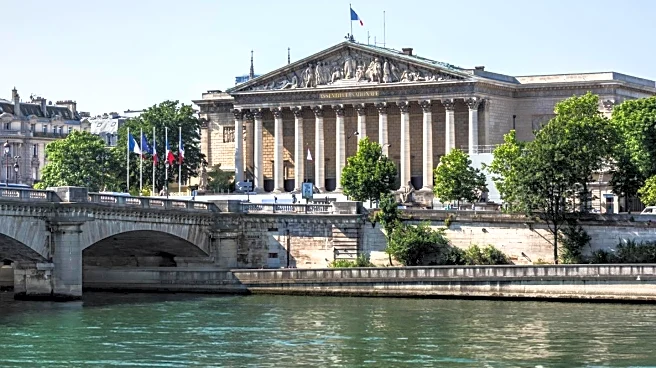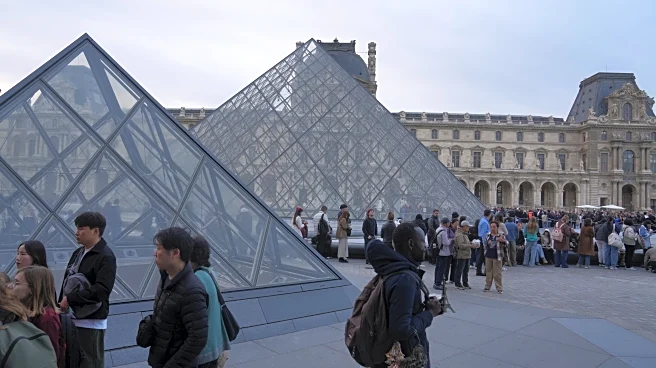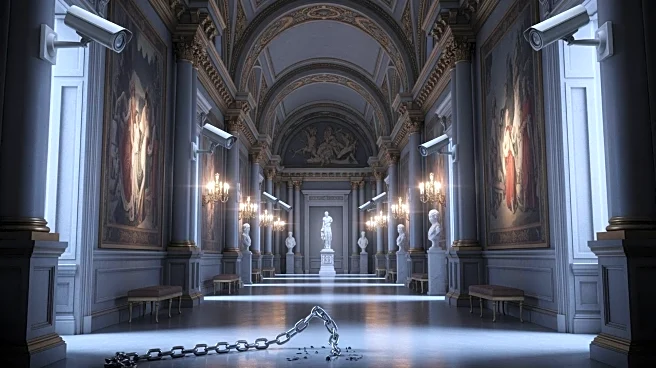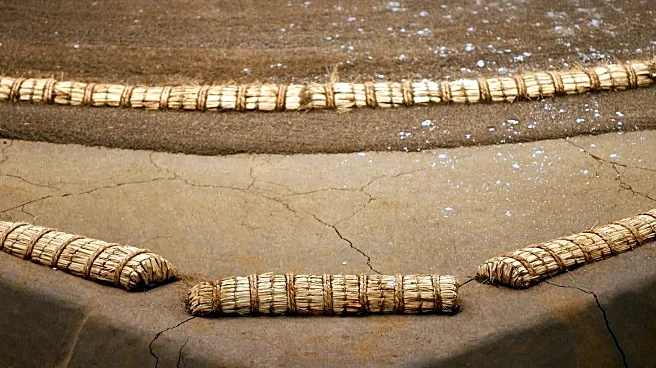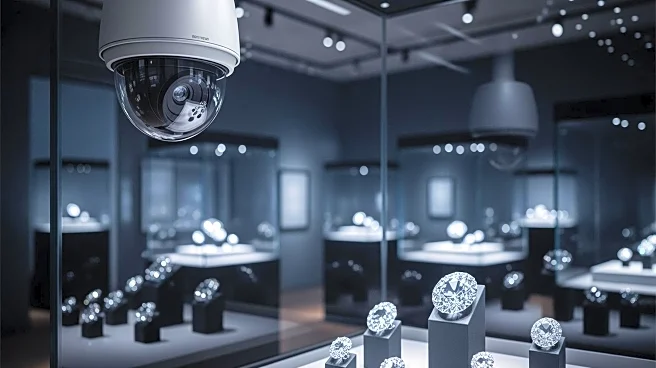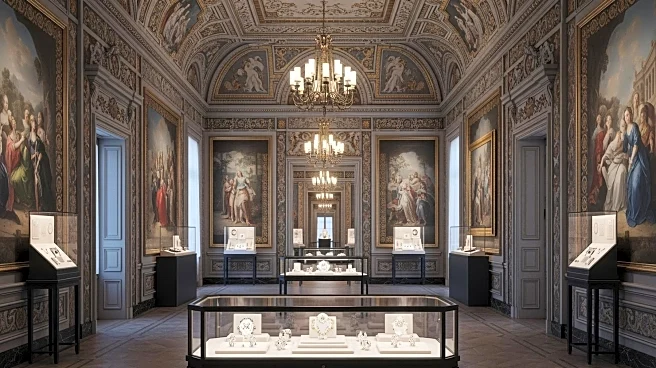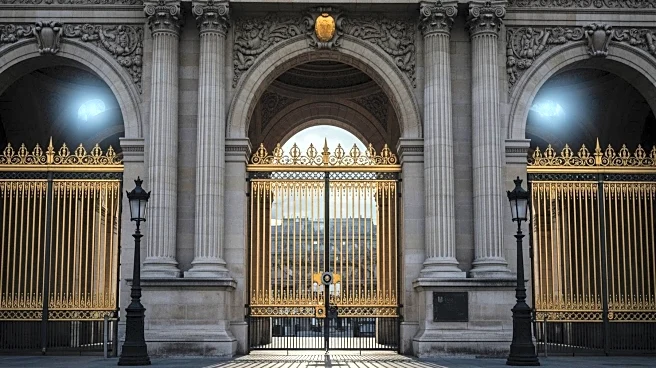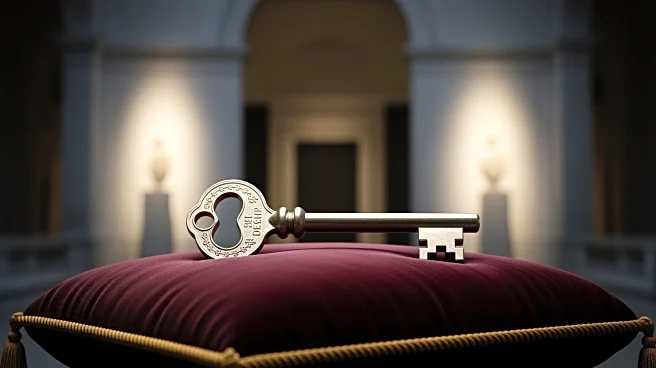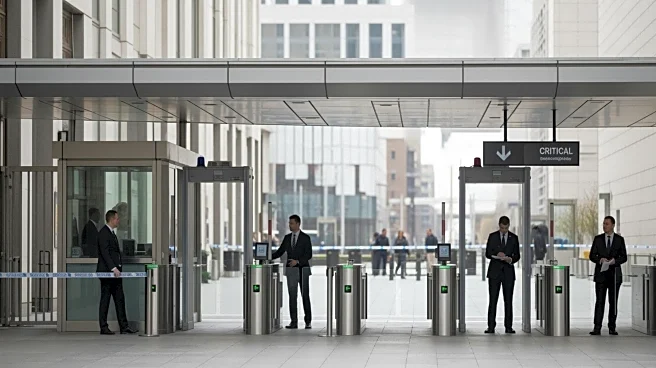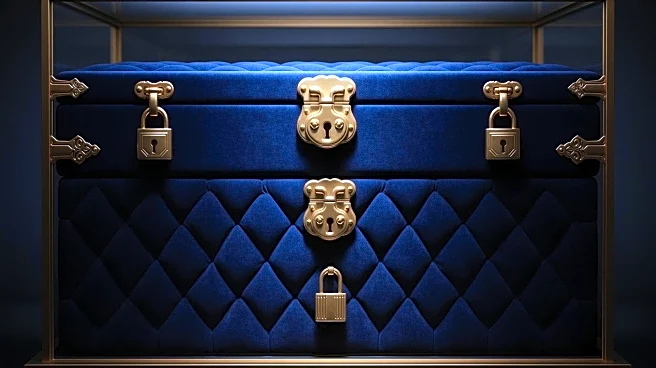What's Happening?
The Louvre Museum in Paris experienced a significant security breach when thieves stole historic jewels worth over $100 million. The museum's director, Laurence des Cars, informed a French Senate committee that the eastern balcony of the Apollo Gallery,
where the robbers gained entry, was not covered by the museum's aging camera system. The heist, which occurred during opening hours, involved the use of a truck-mounted ladder and has raised concerns about the vulnerability of France's museums. Des Cars acknowledged the museum's outdated security infrastructure and offered her resignation, which was rejected by the Culture Minister. The stolen jewels, dating back to the Napoleonic era, are feared to be dismantled for their raw materials.
Why It's Important?
The theft has highlighted significant security vulnerabilities in one of the world's most renowned museums, prompting discussions on the need for modernized security measures. The incident underscores the risks faced by cultural institutions in safeguarding priceless artifacts. The ease of access and the methodical execution of the heist have shocked the nation, raising questions about the adequacy of current security protocols. The potential dismantling of the stolen jewels represents a loss of cultural heritage, impacting historians and art enthusiasts globally. The event may lead to increased scrutiny and investment in museum security systems across France and potentially other countries.
What's Next?
The Louvre Museum is considering several measures to enhance security, including fortifying its perimeter and possibly installing a police station within the museum. Investigators are working to identify suspects and recover the stolen jewels. The museum's director has suggested prohibiting parking near the museum to prevent similar incidents. The French government may face pressure to allocate more resources to protect cultural institutions, and other museums may reassess their security protocols in light of this incident.
Beyond the Headlines
The heist has broader implications for the cultural sector, highlighting the ethical responsibility of museums to protect their collections. It raises questions about the balance between accessibility and security in public institutions. The incident may prompt a reevaluation of how cultural heritage is valued and protected, potentially influencing future policies and investments in museum infrastructure.
